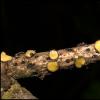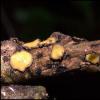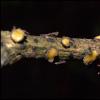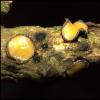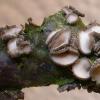
30-12-2025 16:44
Pascal DucosBonjour,Une anamorphe rose stipitée, très nombre

30-12-2025 17:14
 Bernard CLESSE
Bernard CLESSE
Bonjour à toutes et tous,Pourriez-vous aider Albe

29-12-2025 10:15
Hulda Caroline HolteHello, I found and collected this propoloid ascom

30-12-2025 09:04
Hello.A Pyrenomycete sprouting sparsely but very d

29-12-2025 17:44
Isabelle CharissouBonjour,J'aimerais savoir si d'autres personnes au

12-11-2021 00:03
Lepista ZacariasHi everybody,A week ago in my fiels trip I noticed

29-12-2025 17:12
 Bernard CLESSE
Bernard CLESSE
Bonjour à toutes et tous,Pourriez-vous m'aider à
 Wondering if an ID to genus is possible from this photograph alone, no microscopy. Any and all input is greatly appreciated.
Wondering if an ID to genus is possible from this photograph alone, no microscopy. Any and all input is greatly appreciated.Many thanks in advance,
-Danny

it looks like a Cenangium species
cheers,
Stip

Cenangium finally develops its apothecia above the substrate, while on the photo, the apothecia remain immersed in the substrate. If there is a stroma, we have to do with a Rhytismatales, a Coccomyces species maybe.
Regards,
Bernard

Coccomyces is not a bad idea, but I do not see a difference to Cenangium in the development, both genera are erumpent and may finally look superficial, unless a section is made.
The substrate looks for me like Quercus. Given this is right, the fungus reminds me a bit of Cenangiopsis quercicola, a species with characteristic lanceolate protruding paraphyses.
Zotto

Thanks to all for your comments. I've added a few more pictures, though none of them show much more detail than the first, I'm afraid.
Coccomyces looks plausible, at least in the formation of those black petal-like formations beneath the hymenial layer (technical term?), but size and substrate cause me to speculate. Although there's no scale in any of the four photographs, if I had to guess, I would put the diameter of these fruit bodies at around or above several mm each. Coccomyces appear to not only be much smaller (mycobank descriptions measure them in hundreds of microns) but also primarily confined to leafy substrates. Though it's difficult to see in the photos posted, there appears to be the presence of outer excipular hairs as well.
Cenangiopsis quercola doesn't look right. There's none of the thin, satin-black border as seen on several of these fruit bodies. The hymenium seen here is golden yellow as opposed to C. quercola's which is a white/purple-brown. The hairs here are much less pronounced than on C. quercola as well. To what extent can each of these characteristics vary with conditions or age?
I've asked the collector for substrate and scale information and will report back here if/when he has any additional information.
Thanks again for your contributions.



